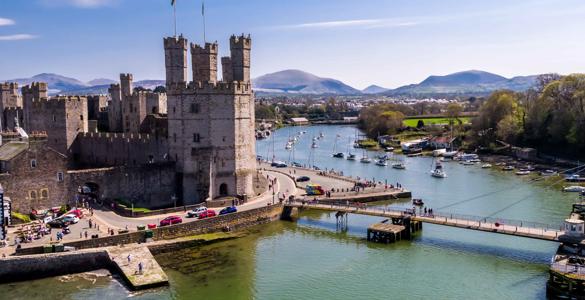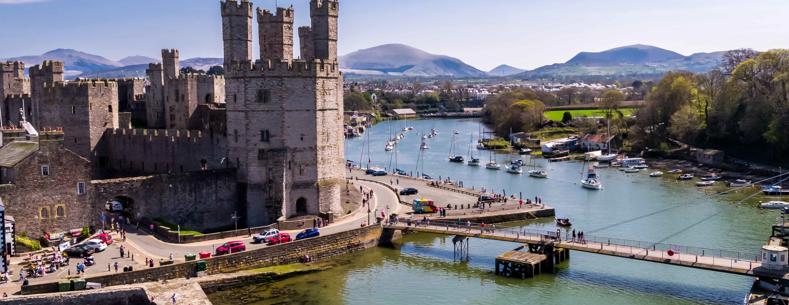The United Nations (UN) defines accessible tourism as the ongoing endeavour to ensure tourist destinations, products and services are accessible to all people, regardless of their physical limitations, disabilities or age. There are various areas of accessibility relevant to tourism. These include the physical accessibility of places, interpersonal communications and navigation of digital spaces. In this article we explore how accessible Wales is as a tourist destination.
Volume and value of tourism
Tourism is an important sector in the Welsh economy, accounting for 5% of GVA and over 11% of employment. In 2022, there were 686,000 visits to Wales from overseas visitors, generating a spend of £391m. Domestic tourism is also very important, with residents of Great Britain taking 8.7 million overnight trips in Wales in 2022 and spending £1.9bn in the process. Domestic visitors also took 62 million tourism day trips in Wales in 2022, with an associated spend of more than £2.3bn.
However, international visitors numbers remain below 2019 levels. In 2022, international visitor spending was down by 24% (£391m total spend) compared to 2019.
A recent release of the Welsh Government’s ‘Tourism Barometer for Wales’ indicates that 2023 continued to be a challenging year for the industry with a third of businesses receiving fewer visitors than the previous year. The Barometer outlines three concerns held by tourism businesses: Welsh Government policies, high operating costs, and reduced disposable income of visitors.
The value of accessible tourism
Estimates suggest 16 million people living in the UK and around 21% of the Welsh population have a disability. In EU countries it is estimated that one in four adults have a disability equalling around 101 million people.
The ‘Purple Pound’ is the term used to describe the collective spending power of people with disabilities. The World Tourism Organisation (UN Tourism) highlights economic benefits for accessible destinations and businesses that can accommodate all visitors. It suggests steps that governments and industry can take to enhance the accessibility of destinations to become more inclusive, competitive and attractive to a wider range of tourists.
Research by Visit England shows the total value of day and overnight spending in England by domestic visitors with a disability in 2023 was £14.1bn. This research also showed the average spend of international visitors to England was £660 per trip, compared to £740 for those travelling with a disability and their companions.
UK tourism policy
In 2019, the UK Government published its Tourism Sector Deal for the UK, which sets out how it plans to work with industry to support and develop the visitor economy.
The deal includes the ambition to “ensure that the UK becomes the most accessible tourism destination in Europe by 2025”. This ambition has been carried through into the post-pandemic Tourism Recovery Plan.
Activities such as the delivery of the UK Government’s Inclusive Transport Strategy, accessibility audits of train stations and delivery of the £30m Changing Places Fund are cited as progress towards this target.
Visit Britain, as the British Tourist Authority (BTA), is responsible for international promotion of Great Britain, developing the visitor economy, and is lead organisation for the post-pandemic recovery plan for tourism. Devolved aspects of tourism are the responsibility of Visit Wales, the team within Welsh Government tasked with the development, promotion, and post-pandemic recovery of the visitor economy in Wales.
Some areas relating to tourism, such as visas and immigration, are reserved to the UK Government.
Welsh tourism policy
The Welsh Government has powers to support the tourism sector in Wales through advice, guidance, and funding. It is also able to undertake publicity and research for tourism in Wales.
In 2020, the Welsh Government published Welcome to Wales, which sets out its priorities for the visitor economy through to 2025. This plan aligns with the accessibility objectives in the UK Government Tourism Sector Deal, and subsequently the Tourism Recovery Plan, through its commitment to improving the accessibility of tourism in Wales.
One of the Welsh Government’s key priorities, outstanding visitor experiences, focuses on providing quality accommodation, accessible facilities, and good customer service. To support this the Welsh Government launched a nationwide Brilliant Basics fund in 2023 to support tourism organisations with improving the accessibility of infrastructure.
How accessible are Welsh cities?
Research published in April 2023 by AgeCo Limited suggests Welsh cities are among the least accessible in the UK. None of the UK’s top ten most accessible cities are located in Wales.
St. Davids, the smallest city in Britain, was considered the most accessible Welsh city, but ranked 22nd out of the 67 total cities assessed. Meanwhile, Cardiff and Swansea were among the least accessible cities, ranking 50th and 61st, respectively.
Overall accessibility scores for each of the devolved nations were determined through a point scoring system for categories including restaurants, hotels, attractions, parking, and toilet facilities. Wales received the lowest average score for its cities.
Improving accessibility of visitor attractions
The five-year Tourism Attractor Destinations (TAD) operation, which launched in 2014 and was led by Visit Wales, was a £67.2m programme to enhance 12 regional tourism sites. Improved accessibility for visitors was one of the anticipated wider impacts of the TAD projects. An evaluation of TAD commissioned by the Welsh Government found that many of the projects improved the accessibility of sites for visitors with disabilities.
Among the TAD projects, the King’s Gate at Caernarfon Castle received £2.09m of TAD funding. The project aimed to improve physical accessibility to upper floors of the castle through installation of a lift as well as providing accessible toilet facilities. The project is the first of its kind to provide level access to the upper embattlements of a UK World Heritage site.
Aside from the TAD funded projects PIWS, a community interest company in Anglesey, launched a campaign in 2022 to increase awareness and use of Access Cards in the tourism and hospitality sector in north Wales. The card, referred to by PIWS as a ‘disability passport’, informs the leisure or tourism provider of additional support needs the holder may require while at their attraction.
Could a visitor levy help to improve accessibility?
Proposals to allow local authorities to introduce a visitor levy are in development by the Welsh Government. Funds raised through a levy would be used to promote sustainable tourism in Wales as defined by UN Tourism:
Tourism that takes full account of its current and future economic, social and environmental impacts, addressing the needs of visitors, the industry, the environment and host communities
This could include additional investment in improving the accessibility of facilities, attractions, and destinations to benefit visitors and local communities. The Welsh Government has said that a draft Bill to introduce a visitor levy will be brought before the Senedd by the end of this year. If legislation is passed, local authorities will decide whether to introduce a visitor levy in its area.
Article by Charlotte Lenton, Senedd Research, Welsh Parliament
Senedd Research acknowledges the parliamentary fellowship provided to Charlotte Lenton by the Engineering and Physical Sciences Research Council (EPSRC) which enabled this article to be completed.






